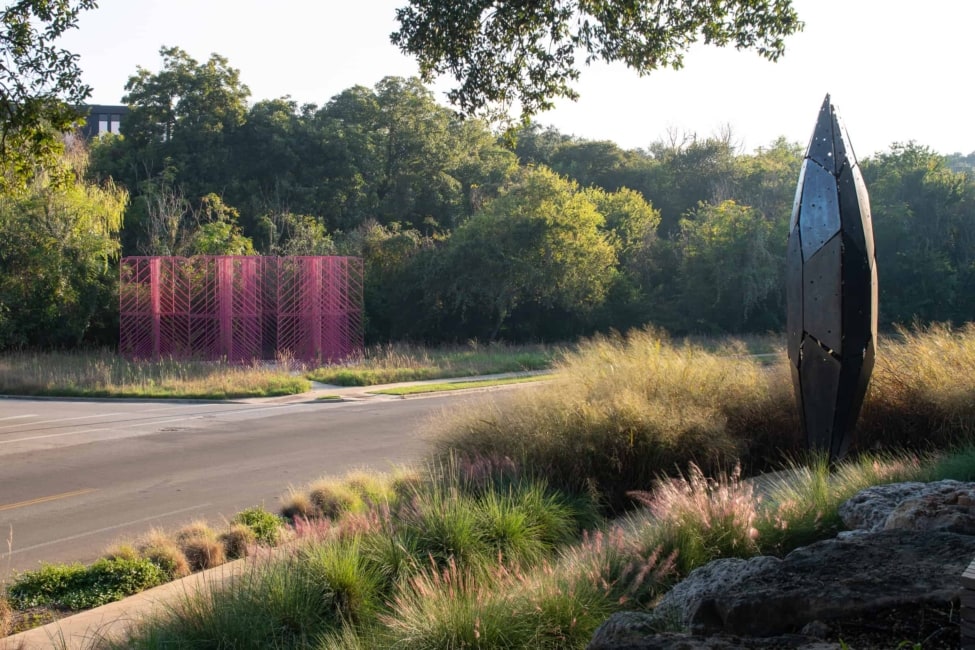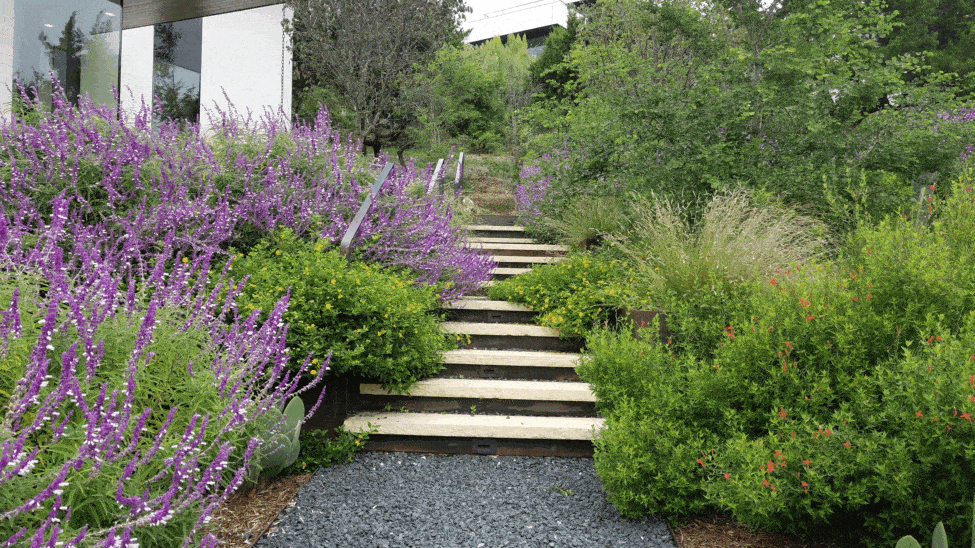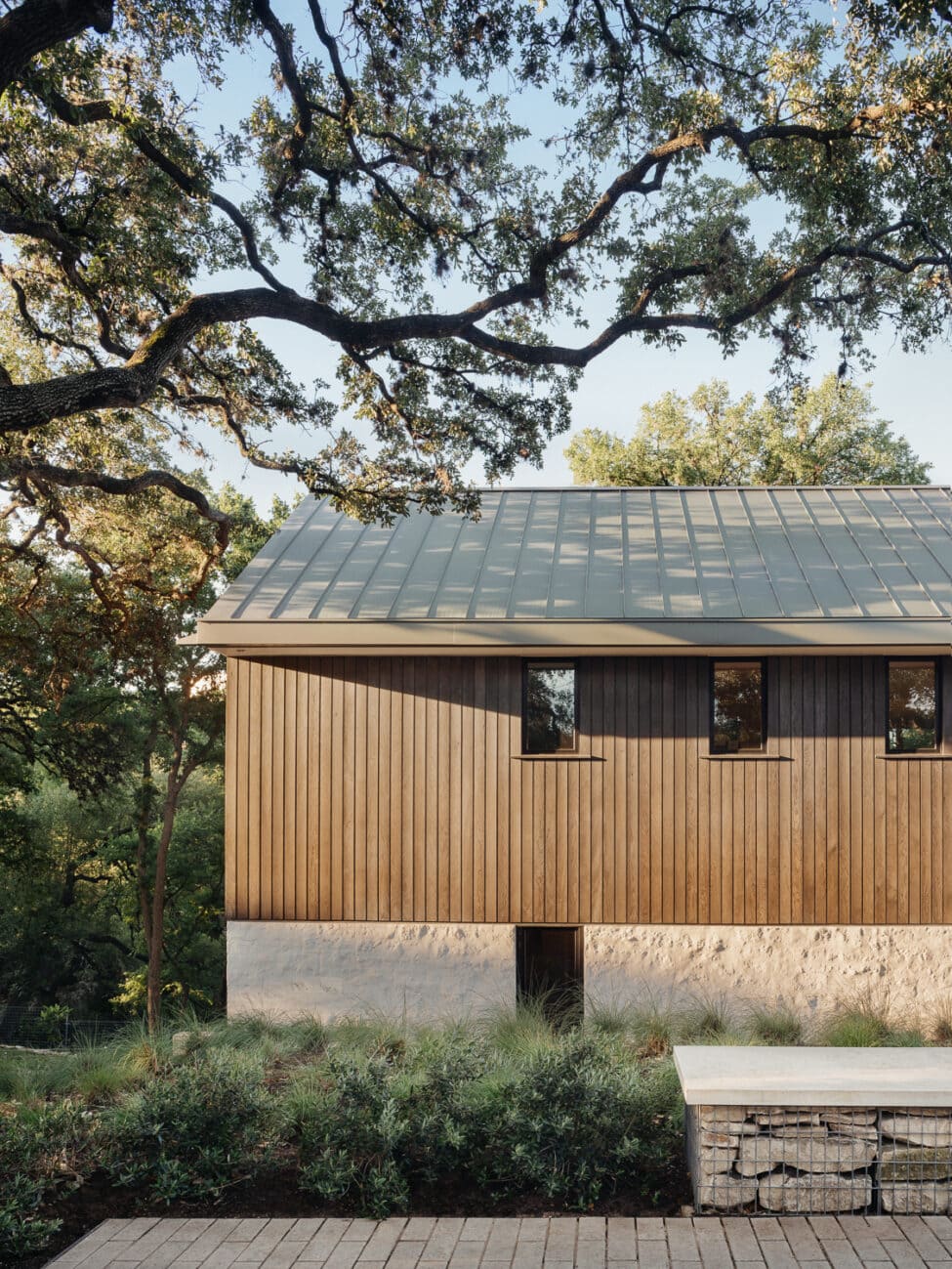The Myth, The Reality.
We’re frequently asked to design a ‘no maintenance’ landscape and while this idea sounds appealing, the truth is it’s more of a myth than a reality. Nature is a dynamic system and even the most well-designed low-maintenance landscapes require care and attention.

Central Texas has always been known for its unpredictable weather, but these past few years have taken us on an even crazier ride, courtesy of climate change. While we’ve learned to brace ourselves for scorching heat waves and stubborn droughts, we’ve been caught off guard by sudden cold snaps and surprise flash floods – which have exceeded climate model predictions. Dealing with these wild weather swings has put a strain on Central Texas’ strong urban forest and native plants, exposing the need for maintenance.
Complicating the request for ‘no-maintenance’ landscapes is a perception that it can only be achieved with a high desert landscape, using rocks, gravel, and only succulent plants. Our regionally-appropriate, low-maintenance landscapes don’t rely exclusively on gravel and rocks, which can increase the reflective heat and challenge plants already surviving a hot and dry climate. Instead, embracing the low-water needs of the indigenous Edward’s Plateau post oak savannas and Blackland Prairie plant communities are the most regionally appropriate low-maintenance landscapes.
Let’s explore the reasons why there’s no such thing as a ‘no maintenance landscape’ and why embracing a realistic approach to landscape design can lead to greater satisfaction and success.

1. Natural Processes Are Inevitable
Nature is ambivalent to human order and routine. Trees grow, plants spread, invasive plants thrive, and all living things have expiration dates. Weather patterns fluctuate causing erosion, floods, drought, debris accumulation, and more. A ‘no maintenance landscape’ would mean ignoring these natural processes.
2. Plant Health Requires Attention
Plants, even those deemed native, adapted, and low-maintenance, need care to stay healthy and vibrant. They require proper watering, healthy soils, and pruning to prevent disease, pests, and overgrowth. Neglecting these tasks can lead to withering plants and an unsightly landscape.
3. Changing Seasons, Changing Needs
Landscapes evolve with the seasons and climate change. What works for a particular plant during one season might not be suitable for another. Adjustments in watering, mulching, and maintenance practices are essential to ensure your landscape’s well-being year-round.
4. Invasive Species Never Rest
Invasive plants are the eternal rivals of every landscape. Invasive plants are those that were either intentionally or accidentally translocated to an area where they did not exist naturally, and where they cause harm to native plants and the local ecosystem. They are tenacious and opportunistic, seizing any chance to take over your landscape. Regular removal is crucial to prevent them from overwhelming your native and well-adapted plants and stealing vital nutrients.
5. Structural Elements Deteriorate
Elements like paths, fences, drains, and outdoor furniture are not immune to wear and tear. Harsh weather conditions and regular use can lead to damage and degradation. Regular inspections and maintenance are necessary to ensure the longevity and functionality of these structures.

6. Ecosystems Thrive on Balance
Healthy landscapes are balanced ecosystems where various elements coexist harmoniously. Introducing invasive plants, neglecting pest management, or disregarding soil health can upset this balance and lead to larger issues down the line.
7. Adapting to Change
Your own preferences and lifestyle may change over time. A landscape that was once suitable for your needs might become impractical. Regular maintenance allows you to adapt your landscape to your evolving tastes and requirements.
8. Nature is Resilient, But Not Invincible
While nature is remarkably resilient, it’s not invincible. Ecosystems can become imbalanced, native species can struggle to compete against invasives, and soil health can deteriorate. Regular maintenance helps mitigate these risks and supports the resilience of your landscape.
9. Spending Time in Nature
Getting outside in the natural environment has endless well-documented benefits for our physical and mental health. AND it’s enjoyable and fun! The opportunities to get our hands dirty and connect with the natural cycles of the earth are a grounded way to engage with the world. Who needs a ‘no maintenance landscape’ anyway?
The concept of a ‘no maintenance landscape’ is an alluring idea but, unfortunately it’s not rooted in reality. A truly beautiful and functional landscape requires ongoing care and attention. Embracing a proactive approach to maintenance ensures that your outdoor space remains a source of pride and joy. Let’s appreciate the ever-changing dynamic beauty of our landscapes and invest in their sustainable upkeep. After all, the effort put into maintenance is a testament to our connection with the natural world.
